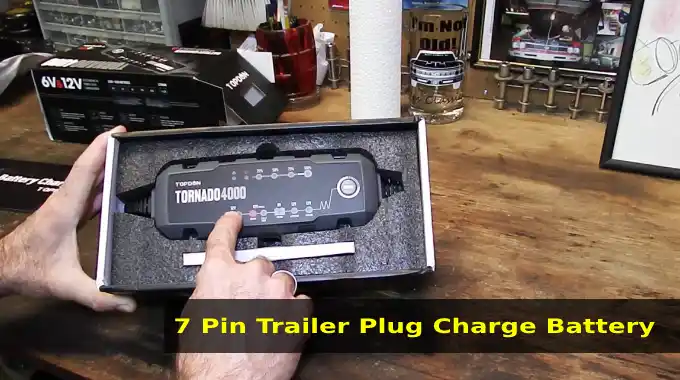Last Updated on April 18, 2023
Embarking on a long road trip with your trusty trailer in tow can be an exciting adventure. But we all know that having a reliable power supply is crucial when you’re on the open road. This is especially true for your trailer’s electrical system.
But the last thing you want is to be stranded in the middle of nowhere with a dead battery. Knowing if your 7-pin trailer plug can charge your battery is essential. Don’t worry. We’ve got you covered.
The Seven-Pin Trailer Plug cannot charge batteries unless it is equipped with an auxiliary power wire (the sixth pin).
Today we’ll explore this commonly asked question and give you all the information you need to ensure you have a power source built to last throughout your journey. So buckle up, it’s going to be a wild ride.
Does a 7 Pin Trailer Plug Charge Battery: What You Need to Know?
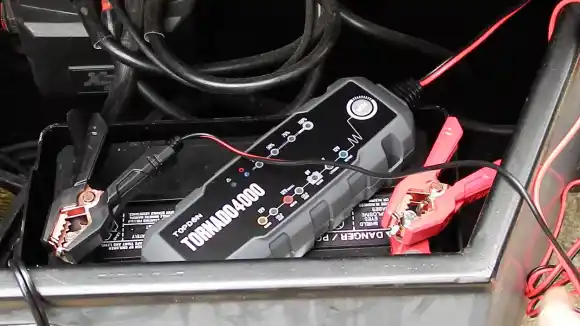
A 7-pin trailer plug is a connector that allows your vehicle to communicate with a trailer. It is commonly used for towing trailers, caravans, and other vehicles. The 7 pins on this plug correspond to different essential functions for safe towing.
The 7 pins on a standard trailer plug are as follows:
- Pin 1: Left Indicator
- Pin 2: Fog Lamp
- Pin 3: Earth Return
- Pin 4: Right Indicator
- Pin 5: Right Tail Lamp
- Pin 6: Brake Lights
- Pin 7: Left Tail Lamp
Each pin has a specific function, and they work together to ensure that the trailer’s lights, brakes, and other electrical systems are synced up with the towing vehicle.
The 7 Pin Trailer Plug is an essential component of any towing setup. Without it, you won’t be able to connect your trailer to your vehicle or control its lights and brakes. It’s important to ensure your plug is in good working order before starting any journey.
How Does a 7 Pin Trailer Plug Work to Charge a Battery?
The 7 pins on the plug each have a specific purpose that helps make towing easier and safer. Connecting your trailer to your towing vehicle using a 7 Pin Trailer Plug creates an electrical connection between them. This connection allows you to transmit power from your vehicle’s battery to your trailer’s battery.
When you start your towing vehicle’s engine, it generates electricity that flows through its alternator and into its battery. This electricity can charge your trailer’s battery through the 7 Pin Trailer Plug.
However, remember that not all 7 Pin Trailer Plugs can charge batteries. Only those with an auxiliary power wire (the sixth pin) can do so.
How to Charge a Battery with a 7 Pin Trailer Plug?
Charging a battery with a 7-pin trailer plug is a simple process requiring basic tools and materials. Follow these steps to ensure a successful charge.
Step 1: Park the Tow Vehicle and Trailer
Before charging a battery with a 7-pin trailer plug, it is important to ensure that the tow vehicle and trailer are parked on level ground. This step is crucial as it ensures the safety of the user and the equipment being used.
Parking on the level ground helps to prevent accidents such as the trailer tipping over or rolling away while being charged. Uneven ground can also cause strain on the towing vehicle and may lead to damage or accidents.
To park on level ground, find a flat surface free from obstacles like rocks, potholes or debris. Ensure that the parking brake is engaged and chock the wheels of the towing vehicle and trailer for added safety.
Step 2: Connect the Trailer to the Tow Vehicle
Once you have confirmed that your vehicles are safely parked, connect your battery charger to your 7-pin trailer plug.
To connect the trailer to the tow vehicle, you must locate the hitch on your vehicle and align it with the coupler on your trailer. Once aligned, lower the coupler onto the hitch ball and engage the locking mechanism. Make sure that it is secure and properly latched before proceeding.
It’s also important to ensure that all safety chains are securely attached and crossed under the tongue of the trailer. This will help prevent any accidents in case of detachment from the hitch.
Step 3: Locate the Positive and Negative Terminals
To charge your battery with your 7 pin trailer plug, you need to first locate the positive and negative terminals on the battery. The positive terminal is usually marked with a plus sign (+) and may be colored red, while the negative terminal is usually marked with a minus sign (-) and may be colored black.
It’s important to locate these terminals before connecting them to the 7 pin trailer plug. This ensures you connect the right terminals and reduces the risk of damaging your battery or vehicle. Once you have located the terminals, ensure they are clean and free of corrosion or debris.
Step 4: Connect the Battery Terminals to the Correct Pin
The 7-pin trailer plug has seven pins, each serving different functions. Pin 4 and Pin 5 are crucial when charging a battery. Pin 4 is for +12V power supply, while Pin 5 is for ground or earth return.
Therefore, you should connect the positive terminal of your battery to Pin 4 and the negative terminal to any good ground on your vehicle.
It’s important to note that not all vehicles have wired their plugs in this manner. Some may use different pins for charging batteries or not have wiring for charging at all. Hence, checking your vehicle’s wiring diagram before charging a battery using a trailer plug is crucial.
Most manufacturers label their plugs with numbers indicating each pin’s function to avoid confusion. You can also consult an expert mechanic or electrician if you’re unsure which pin to use.
Step 5: Connect the Battery Negative Terminal to Ground
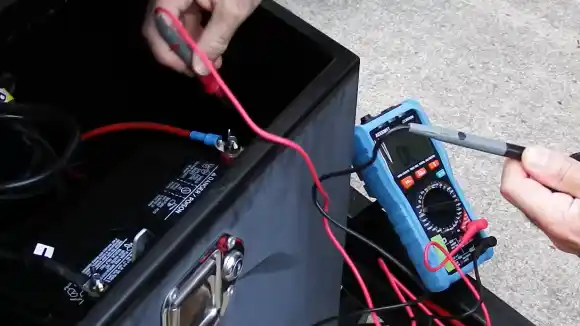
When recharging a battery with your 7-pin trailer plug, connecting the battery’s negative terminal to a good ground on your vehicle is important. This step completes the circuit and allows the current to flow from the tow vehicle’s alternator through the trailer plug and into the battery.
To find good ground on your vehicle, look for a clean, unpainted metal surface near the battery or engine block. This surface should be securely bolted to the vehicle’s frame and directly connected to the battery’s negative terminal.
Step 6: Start Your Engine and Let it Run While Charging
To charge a battery with a 7-pin trailer plug, you must start your trailer engine and let it run while charging. This is because the power required to charge the battery comes from the alternator in your vehicle. The alternator generates electricity when the engine is running, which is used to charge the battery.
It’s important to note that you should not attempt to charge a dead battery using this method. If your battery is completely dead, it cannot hold a charge and must be replaced. Also, make sure that you park your tow vehicle and trailer on level ground before attempting to charge the battery.
List of Materials Needed for Charging a Battery with 7 pin Trailer Plug
To charge a battery with a 7 pin trailer plug, you will need some materials. These materials are essential for the process to be successful. Here is a list of the materials needed:
- Battery charger: You will need a battery charger compatible with your battery’s voltage and capacity. It should also have an output current that matches the charging requirements of your battery.
- Jumper cables: For the positive terminal of the battery, you’ll need jumper cables, and for the negative terminal, you’ll need good ground on your vehicle.
- Battery: Obviously, you will need a battery that needs charging. Ensure that it is in good condition and has no leaks or cracks.
- Tow vehicle: You will need a 7-pin trailer plug connector tow vehicle. Ensure that it is in good working condition and has no loose connections.
In addition to these materials, you may also need some tools for this process. Here is a list of tools needed:
- Wrenches: You may need wrenches to remove bolts or nuts holding the battery in place.
- Screwdrivers: You may need screwdrivers to access certain parts of your vehicle or battery.
- Wire strippers/cutters: You may need wire strippers/cutters if you have to strip wires during this process.
7-Pin Trailer Plug: Things to Remember When Charging Batteries
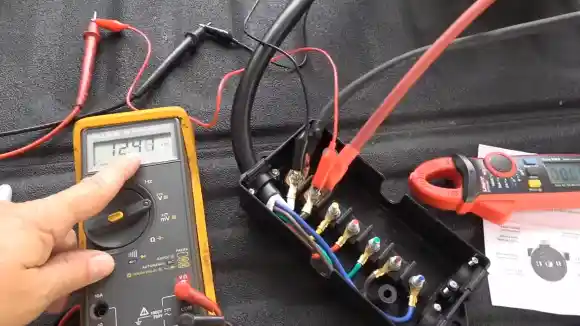
Several important things must be remembered when charging a battery with a 7-pin trailer plug.
- Ensuring the towing vehicle and the travel trailer are parked on level ground before charging the battery is crucial.
- Make sure that all of the connections are secure and that there are no loose wires or cables.
- When locating the positive and negative battery terminals, be cautious and wear gloves if necessary.
- When connecting the positive terminal of the battery to the correct pin on the 7-pin trailer plug, refer to your owner’s manual for specific instructions.
- Connecting the battery’s negative terminal to good ground on your vehicle is also essential.
- Finally, monitor your battery closely when starting your engine and letting it run while charging.
Common Issues May Arise When Charging a Battery with a 7 Pin Trailer Plug
Like any other electrical component, the 7 Pin Trailer Plug can experience issues that can cause problems for the user.
Plug Corrosion
Corrosion is among the most common issues with a 7 Pin Trailer Plug. Corrosion can occur due to exposure to moisture and dirt, leading to poor connections and even failure of the plug. Another issue is loose connections, which can cause intermittent power supply or no power at all.
Damaged Wires
Another potential problem with a 7 Pin Trailer Plug is damaged wires. Wires can become damaged due to wear and tear or accidental damage during use. Damaged wires can cause short circuits or open circuits, preventing the proper functioning of the trailer’s electrical systems.
Loose Connections
Loose connections are among the most common problems with a 7 Pin Trailer Plug. This can cause intermittent power loss or even complete failure of the plug. To fix this problem, ensure that all connections are tight and secure.
You may also need to check for connection corrosion, which can be cleaned off using a wire brush.
Burnt Out Fuses
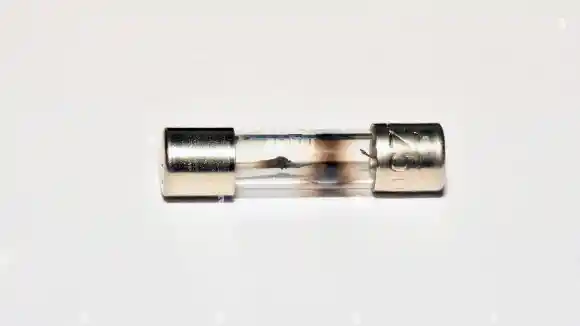
Another issue that can occur with a 7 Pin Trailer Plug is burnt-out fuses. If this happens, you’ll need to replace the fuse for the plug to work again properly. Make sure to use the correct size and type of fuse as specified by your trailer’s manufacturer.
Wiring Problems
Wiring problems can also cause issues with your 7 Pin Trailer Plug. Check for any frayed or damaged wires and wiring that may have come loose from its connection point. If there are any damaged wires, they will need to be replaced for the plug to function correctly.
Faulty Grounding
A faulty ground connection can also cause problems with your 7 Pin Trailer Plug. This is because grounding is necessary for proper electrical flow between the trailer and towing vehicle. To fix this issue, ensure all ground connections are clean and tight.
Broken Housing
Finally, if you notice physical damage to your 7 Pin Trailer Plug housing, it may need to be replaced entirely to function properly.
Is it safe to charge a battery with a 7 pin trailer plug?
It is completely safe to charge a battery with a 7 pin trailer plug. This plug is designed to power various electrical components in a trailer, including charging the battery.
In fact, many modern trailers come equipped with a 7-pin trailer plug precisely for this purpose. When properly connected, the 7-pin trailer plug provides a reliable and stable power source for charging a battery, without any risk of damage or danger.
But, remember that the specific method of charging a battery using a 7 pin trailer plug may vary depending on the type of trailer and battery involved. Some trailers require a separate battery charger, while others have built-in charging capabilities.
How Many Volts is a 7-Pin Trailer Plug?
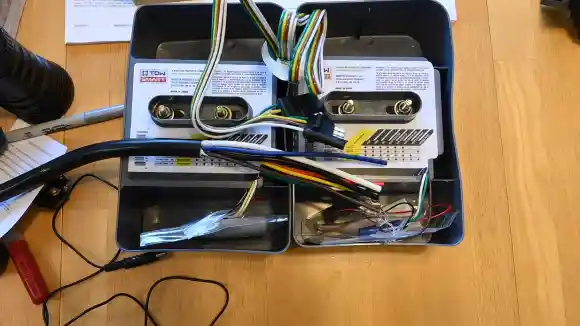
A 7 pin trailer plug typically supplies 12 volts of power to the trailer. But, it is essential to note that the voltage can vary depending on the specific application and configuration.
The 7 pin trailer plug is commonly found on larger trailers or RVs and is used to transfer power to various components such as lights, brakes, and charging ports.
When connecting a trailer to a tow vehicle, it is essential to ensure that the wiring between the two is compatible and in good condition to prevent any electrical issues while on the road.
Unlock Your Towing Potential: Master the 7 Pin Trailer Plug
The 7 pin trailer plug is a crucial component for any towing experience. Understanding how it works and its capabilities can be crucial to ensuring a successful trip.
While the 7 pin trailer plug is primarily used for signal lights, brakes, and ground connections, it can also charge your battery. This function allows you to keep your battery charged on the go without seeking out electrical outlets or separate chargers.
So whether you’re headed out on a long road trip or just transporting cargo across town, take advantage of this handy device and enjoy a stress-free journey.

